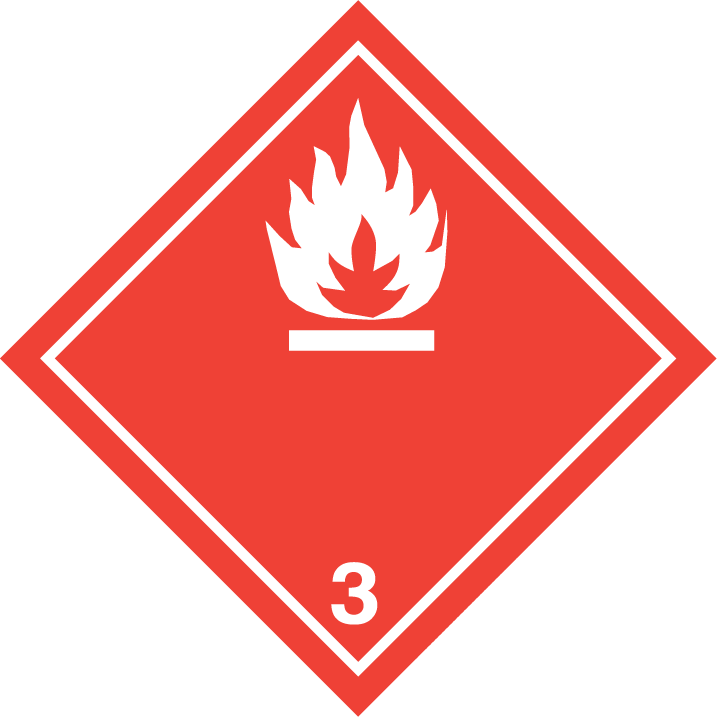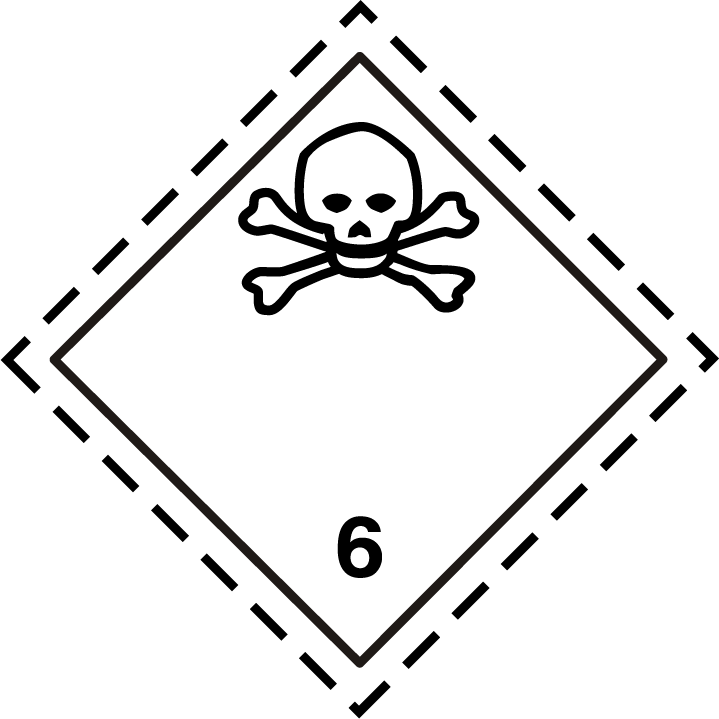SAFETY DATA SHEET
Differential quik III kit (modified giemsa) Solution A Fixative
1. IDENTIFICATION
Product Identifiers
Product Name:
Differential quik III Kit (Modified Giemsa) Solution A Fixative
Other Names:
Differential quik III Fixative
Product Number(s):
26096-25 (A), 26096-50 (A), 26096-75(A), C26096-25 (A), C26096-50 (A), C26096-75 (A)
CAS Number:
67-56-1
Recommended use of the chemical and restriction on use
Laboratory use. Laboratory chemicals
Company Details
ProSciTech Pty Ltd
11 Carlton Street
KIRWAN QLD 4817
Australia(07) 4773 9444www.proscitech.com
11 Carlton Street
KIRWAN QLD 4817
Australia(07) 4773 9444www.proscitech.com
Emergency Contact Details
ProSciTech Pty Ltd
11 Carlton Street
KIRWAN QLD 4817
Australia(07) 4773 9444www.proscitech.com
11 Carlton Street
KIRWAN QLD 4817
Australia(07) 4773 9444www.proscitech.com
2. HAZARDS IDENTIFICATION
Classification of the substance or mixture
Methyl Alcohol
GHS02 Flame
Flam. Liq. 2 H225 highly flammable liquid and vapour
GHS06 Skull and crossbones
Acute Tox. 3 H301 Toxic if swallowed
Acute Tox. 3 H311 Toxic in contact with skin
GHS08 Health Hazard
STOT SE 1 H370 causes damage to the central nervous system and the visual organs
STOT RE 2 H373 May cause damage to organs through prolonged or repeated exposure.
GHS07
Acute Tox. 4 H332 Harmful if inhaled.
GHS02 Flame
Flam. Liq. 2 H225 highly flammable liquid and vapour
GHS06 Skull and crossbones
Acute Tox. 3 H301 Toxic if swallowed
Acute Tox. 3 H311 Toxic in contact with skin
GHS08 Health Hazard
STOT SE 1 H370 causes damage to the central nervous system and the visual organs
STOT RE 2 H373 May cause damage to organs through prolonged or repeated exposure.
GHS07
Acute Tox. 4 H332 Harmful if inhaled.
Label Elements




Signal Words
Danger
Hazard Statement(s)
Highly flammable liquid and vapour
Toxic if swallowed or in contact with skin
Harmful if inhaled
Causes damage to the central nervous system and the visual organs
May cause damage to organs through prolonged or repeated exposure
Toxic if swallowed or in contact with skin
Harmful if inhaled
Causes damage to the central nervous system and the visual organs
May cause damage to organs through prolonged or repeated exposure
Precautionary Statement(s)
Keep away from heat/sparks/open flames/hot surfaces - No smoking
Keep container tightly closed
Ground/bond container and receiving equipment
Use explosion-proof electrical/ventilating/lighting/equipment
Use only non-sparking tools
Take precautionary measures against static discharge
DO NOT breathe dust/fumes/gas/mist/vapours/spray
Wash hands thoroughly after handling
Do not eat, drink or smoke when using this product
Use only outdoors or in a well-ventilated area
Wear protective gloves/protective clothing/eye protection/ face protection
Keep container tightly closed
Ground/bond container and receiving equipment
Use explosion-proof electrical/ventilating/lighting/equipment
Use only non-sparking tools
Take precautionary measures against static discharge
DO NOT breathe dust/fumes/gas/mist/vapours/spray
Wash hands thoroughly after handling
Do not eat, drink or smoke when using this product
Use only outdoors or in a well-ventilated area
Wear protective gloves/protective clothing/eye protection/ face protection
Primary route(s) of entry
Not available
Human Health
Inhalation:
Remove victim to fresh air and keep at rest in a position comfortable for breathing.
Ingestion:
Immediately call a POISON CENTRE/doctor. Rinse mouth.
Eyes:
Not available
Skin:
(or hair) remove/take off immediately all contaminated clothing. Rinse skin with water/shower. Take off immediately all contaminated clothing and wash it before reuse.
Environment
Store in a well-ventilated place. Keep cool. Store locked up. Dispose of contents/container in accordance with local/regional/national/international regulations.
3. COMPOSITION/INFORMATION ON INGREDIENTS
Name
CAS No.
Content (w/w)
Classification
Methyl Alcohol
67-56-1
>50-≤100%
Mixture
4. FIRST AID MEASURES
Ingestion
Do not induce vomiting; call for medical help immediately.
Inhalation
In case of unconsciousness place patient stably in side position for transportation.
Skin Contact
Immediately wash with water and soap and rinse thoroughly.
Eye Contact
Rinse opened eye for several minutes under running water. Then consult a doctor.
Other Information
No further relevant information available.
5. FIREFIGHTING MEASURES
Suitable extinguishing equipment
CO₂, powder or water spray. Fight larger fires with water spray or alcohol resistant foam.
HAZCHEM
No further relevant information available.
Special protective equipment and precautions for fire fighters
6. ACCIDENTAL RELEASE MEASURES
Personal precautions, protective equipment and emergency procedures
Wear protective equipment. Keep unprotected persons away.
Environmental precautions
Dilute with plenty of water. Do not allow to enter sewers/surface or ground water.
Methods and materials for containment and clean up
Absorb with liquid-binding material (sand, diatomite, acid binders, universal binders, sawdust). Dispose contaminated material as waste according to item 13. Ensure adequate ventilation.
7. HANDLING AND STORAGE
Precautions for safe handling
Ensure good ventilation/exhaustion at the workplace. Prevent formation of aerosols. Keep ignition sources away - Do not smoke. Protect from heat. Protect against electrostatic charges.
Conditions for safe storage
8. EXPOSURE CONTROLS/PERSONAL PROTECTION
Exposure Standards
Material
TWA ppm
TWA mg/m3
STEL ppm
STEL mg/m3
Methyl Alcohol
200ppm
262mg/m³
250ppm
328mg/m³
Engineering controls
Keep away from foodstuffs, beverages and feed. Immediately remove all soiled and contaminated clothing. Wash hands before breaks and at the end of work. Store protective clothing separately. Avoid contact with the eyes and skin.
Personal protective equipment
Eye and face protection
Tightly sealed goggles.
Skin protection
Protective gloves. The glove material has to be impermeable and resistant to the product/the substance/the preparation. The esact break through time has to be found out by the manufacturer of the protective gloves and has to be observed.
Body protection
Not available
Respiratory protection
In case of brief exposure or low pollution use respiratory filter device. In case of intensive or longer exposure use self-contained respiratory protective device.
9. PHYSICAL AND CHEMICAL PROPERTIES
General information
Appearance
Light blue liquid
Odour
Characteristic
pH
Not determined
Vapour Pressure
128hPa at 20°C
Density
1.11g/cm³ at 20°C
Boiling Point
64.4°C
Melting Point
Undetermined
Solubility
Fully miscible
Specific Gravity of Density
Not available
Flash Point
10.6 °C
Flammable (Explosive) Limits
Lower: 5.5 Vol %
Upper: 44 Vol %
Upper: 44 Vol %
Ignition Temperature
385 °C
Formula
Not available
10. STABILITY AND REACTIVITY
Reactivity
No further relevant information available
Chemical stability
No decomposition if used according to specifications.
Possibility of hazardous reactions
No dangerous reactions known.
Conditions to avoid
No further relevant information available.
Incompatible materials
No further relevant information available.
11. TOXICOLOGICAL INFORMATION
Acute effects
Not available
Eye contact
No irritant effect
Skin contact
No irritant effect
Ingestion
Not available
Inhalation
No sensitising effects known.
Toxicity and irritation
Toxic
12. ECOLOGICAL INFORMATION
Ecotoxicity
No further relevant information available.
Persistence and degradability
No further relevant information available.
Bioaccumulative potential
no further relevant information available.
Other adverse effects
Water hazard class 1: slightly hazardous for water. Do not allow undiluted product or large quantities of it to reach ground water, water course or sewage system.
13. DISPOSAL CONSIDERATIONS
General information
Must not be disposed together with household garbage. Do not allow product to reach sewage system. Disposal must be made according to official regulations. Recommended cleansing agent: Water, if necessary together with cleansing agents.
14. TRANSPORT INFORMATION
ADG label required


HAZCHEM
No further relevant information available.
UN Number
UN1230
Proper shipping name
1230 Methanol solution
Transport hazard class
Class 3 Flammable liquids
Label 3+6.1
Label 3+6.1
Packing group
II
Environmental hazard
Not applicable
Special precautions for users
Warning: Flammable liquids
Hazard identification number (Kemler code): 336
EMS Number: F-E,S-D
Stowage category B
Stowage code SW2 Clear of living quarters.
Hazard identification number (Kemler code): 336
EMS Number: F-E,S-D
Stowage category B
Stowage code SW2 Clear of living quarters.
Additional information
Limited quantities (LQ) 1L
Excepted quantities (EQ) Code: E2
Maximum net quantity per inner packaging: 30mL
Maximum net quantity per outer packaging: 500ml
Excepted quantities (EQ) Code: E2
Maximum net quantity per inner packaging: 30mL
Maximum net quantity per outer packaging: 500ml
15. REGULATORY INFORMATION
Poisons Schedule Number
Methyl Alcohol S5, S6
Other Information
Not available
16. OTHER INFORMATION
SDS preparation date
6 December 2022
Comments
This information is based on our present knowledge. However, this shall not constitute a guarantee for any specific product features and shall not establish a legally valid contractual relationship.
References
Not available
This Safety Data Sheet (SDS) has been prepared in compliance with the Preparation of Safety Data Sheets for Hazardous Chemicals Code of Practice February 2016. It is the user's responsibility to determine the suitability of this information for adoption of necessary safety precautions. The information published in this SDS has been compiled from the publications listed in Section 16: to the best of our ability and knowledge these publications are considered accurate. We reserve the right to revise Safety Data Sheets as new information becomes available. Copies may be made for non-profit use.